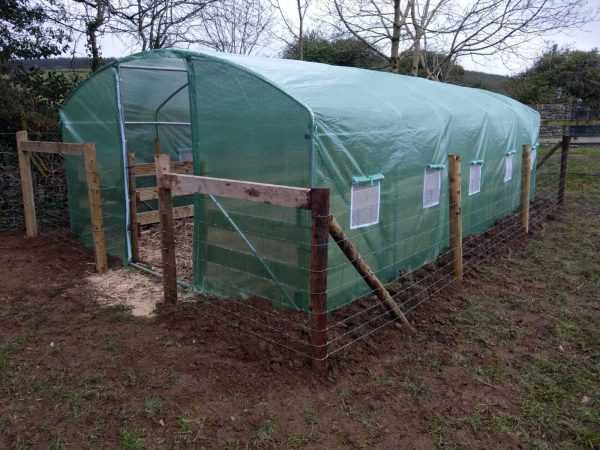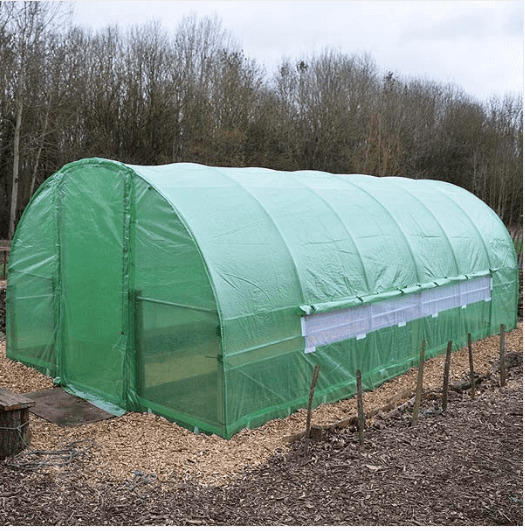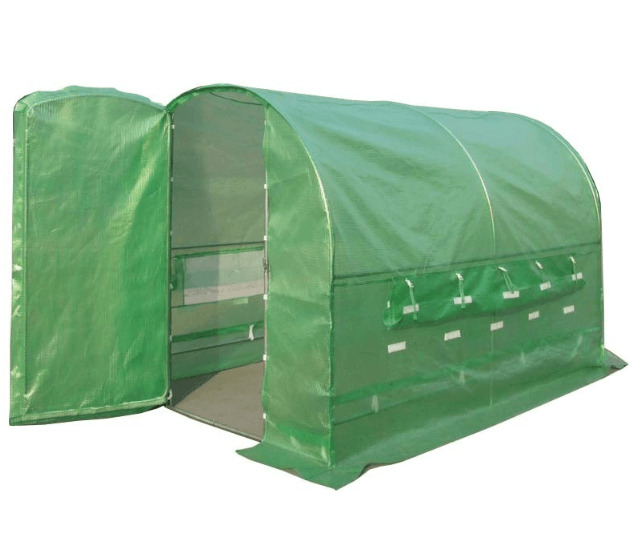Benefits of Using Polytunnels in Spring
Table of Contents:
How can a polytunnel help?
Polytunnels are an increasingly popular option for gardening. These structures offer a number of benefits, helping gardeners extend the growing season, protect plants from harsh weather, and even increase yields. In this article we’ll explore the benefits of using polytunnels for spring gardening, as well as some tips for getting the most out of them.
One of the main benefits of using polytunnels in spring is that they help protect plants from the elements. Spring weather can be unpredictable, with sudden frosts or heavy rains damaging fragile seedlings. Polytunnels provide a microclimate that shields plants from these weather events, allowing them to grow and thrive even in adverse conditions. Additionally, the plastic covering of a polytunnel allows light to pass through, creating a warm, humid environment that is perfect for growing a wide variety of plants.
Another advantage of using polytunnels in spring is that they allow gardeners to start planting earlier in the season. By providing a protected growing environment, polytunnels allow gardeners to get a head start on the growing season, planting seeds and seedlings before the last frost date. This means that gardeners can enjoy fresh, home-grown produce earlier in the year, and even extend the growing season well into the fall.
In addition to extending the growing season, polytunnels can also help increase yields. By providing a controlled environment that protects plants from pests and disease, gardeners can grow healthier, more productive plants. Additionally, because polytunnels allow for more precise control over watering and fertilization, gardeners can optimise growing conditions to maximize yields.
Of course, using polytunnels in spring does require some planning and preparation. Gardeners will need to choose the right location for their polytunnel, ensuring that it receives adequate sunlight and is protected from strong winds. They will also need to prepare the soil within the polytunnel, adding compost or other organic matter to improve soil fertility.
When it comes to planting within a polytunnel, gardeners should choose plants that are well-suited to the conditions within the structure. Many vegetables and herbs, such as tomatoes, peppers, and basil, thrive in the warm, humid environment created by a polytunnel. Gardeners should also be sure to provide proper ventilation within the polytunnel, as excessive humidity can lead to disease and other problems.
In conclusion, using polytunnels in spring gardening can be a great way to extend the growing season, protect plants from adverse weather and increase yields. By providing a warm, humid growing environment, polytunnels allow gardeners to get a head start on the growing season, and grow a wide variety of plants that might otherwise be difficult to cultivate in their climate. With proper planning and care, polytunnels can be a valuable tool for any gardener looking to maximize their growing potential.
Check out our top 3 polytunnels!
Super Pro Heavy Duty Polytunnel
6 x 3.5 x 1.95m
- “High Eaves” straight wall design
- Stand-up working space across the entire tunnel width
- Superior walk-in space & extra cultivating area
- High quality & durable materials
- Dual-zippered
- UV protected
- Cross-woven rip-stop PE cover
- Ground skirt to anchor & weight down the polytunnel
- Speedy construction with easy to read assembly guide
- 600 x 350 x 195cm (19.6 x 11.4 x 6.3 ft)
- 32mm thick galvanised frame
- 200cm wide hinged metal framed door
Polytunnel Pro Galvanised
6 x 3 x 2m
- 600 x 300 x 200cm / 19.6 x 9.8 x 6.5 ft
- Door size: 89 x 192cm / 35 x 75.5 inches
- 25mm thick, fully galvanised, non-rust frame
- Extremely strong and durable
- 6-section frame design
- Full ground bars
- Diagonal storm-bracing bars
- Two longitudinal roof bars
- One large roll-up window on the wide
- Integral fly net
- UV open, giving natural UV levels
- Speedy construction with an easy to read assembly guide
Polytunnel Pro Galvanised
4 x 2 x 2m
- 4 x 2 x 2m / 13.1 x 6.5 x 6.5 ft
- Door size: 89 x 192cm / 35 x 75.5 inches
- 25mm thick galvanised frame
- Super strong & durable
- Fully galvanised non-rust steel frame
- 4-section frame design
- 8m2 of workspace
- Full ground bars
- Diagonal storm bracing bars
- Two longitudinal roof bars
- 4 large roll-up windows on the side
- Integral fly net
- Metal door frame
- UV open, giving natural UV levels
- Speedy construction with easy to read assembly guide








